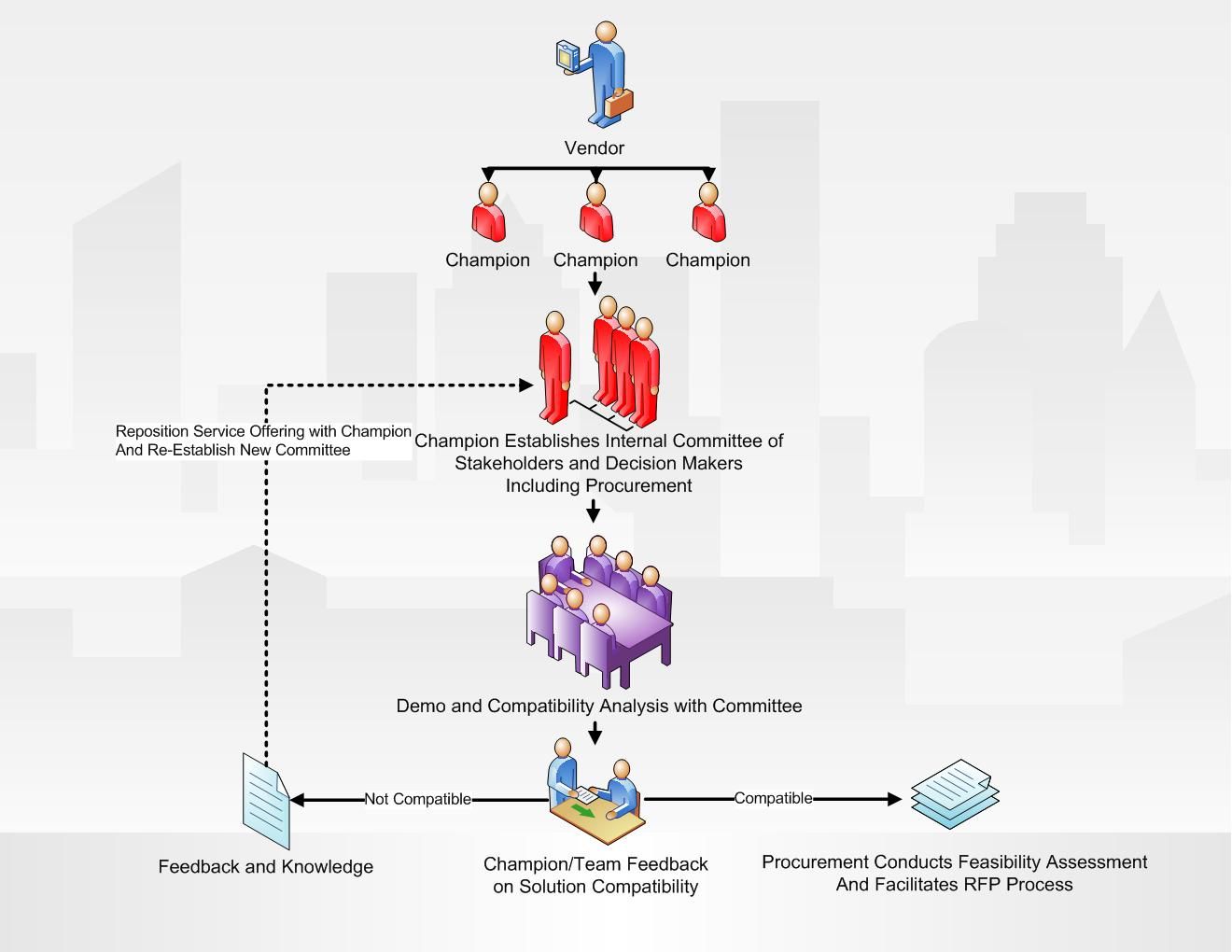Tips on Cracking the CRO Procurement Process
The need for innovation in clinical trials has sparked significant interest from a variety of new enterprises including technology, analytics, subject enrollment/engagement/retention, EDC, risk-based monitoring, and many mor

The need for innovation in clinical trials has sparked significant interest from a variety of new enterprises including technology, analytics, subject enrollment/engagement/retention, EDC, risk-based monitoring, and many more. Nevertheless, many of these enterprises lack the business knowledge required to penetrate the clinical operations landscape and successfully commercialize in this industry. Clinical operations is a highly regulated industry, and there are many complex facets, functions, and committees involved in the planning and execution of a clinical trial. This article will include advice from John Reites, Senior Director of Health Engagement at Quintiles, and will delineate strategies on how to approach, position and procure clinical trial solutions within CROs like Quintiles and biopharmaceutical enterprises.
What Service Providers Need to Know
Penetrating the field of clinical research is one of the most challenging endeavors that any service provider can take. Firstly, the clinical trials industry is highly regulated, and providers that are not up with required regulations are weeded out; for example, technology firms need to exhibit 21-CFR compliance validation documents if they handle any clinical trial data. Secondly, the clinical trials industry is based primarily on relationships and corresponding sales cycles can take at least six months to a year, if not, more. Lastly, the procurement process is very complex, and service providers need to not only differentiate their solutions from competition, but also understand how their solutions operate and fit into a clinical study. Figure 1 outlines a typical procurement process that companies like Quintiles would utilize.
Figure 1: Procurement Strategy Process

Step 1: Target and Establish Your Champions
As mentioned previously, relationships matter in the clinical trials industry. In order to penetrate the industry, you need to understand which contact to approach, their titles, and how to turn them into a champion; champions are internal contacts that support your solutions, and rally groups of prospects who may benefit from your solutions. If your enterprise is new to the clinical trials industry, you may initially connect with your champions through social media or other means, and then track them down to meet them in person at conferences.
“The procurement process is often relationship based… you can send an email to a general email box, but it’s really hard to breakthrough without a conduit. In my experience, movement with potential partners starts with having the right conduit, the right somebody who can make that connection within the company,” said John Reites. “A lot of service and technology providers connect with me on LinkedIn and when we go to conferences, they find me there… the best place to generally start is by reaching out and connecting with people who have the titles around the offering or product you’re trying to service,” added Reites.
Step 2: Help Your Champion Develop an Internal Committee
Albeit many CROs and biopharmaceutical enterprises have established procurement procedures, it is important for the service provider to steer the champion in the right direction, as some internal contacts may not be completely familiar with how to best position your solutions internally. It is advisable to initially start with demonstrating your solution to the champion, and get them to fully understand your capabilities. During this phase, you may suggest the types of internal contacts the champion may approach in order to form an internal committee; knowing who to approach and suggesting a committee not only lessens the burden on the champion, but, it also demonstrates to the champion that you’re knowledgeable with navigating the system and addressing a specific problem. A subject enrollment firm, for example, could form a committee within the company they are working to partner with that consists of the champion (subject enrollment), vendor procurement, IT, scientists, compliance and clinical operations. The champion and internal committee will vary for different types of solutions that service providers offer.
Sometimes, this process requires numerous meetings with different internal committees, and these committees oftentimes start small and, subsequently, grow if there is further interest and after proper pitching refinement. “Generally, we like to keep these initial meetings small, because we don’t want to bring 50 people to the call and overwhelm them as it may be not what they’re looking for,” said Reites. “There are some companies that will push on the relationships and they’ll want the whole committee to come to their pitch; I’ve seen where that has worked well for some groups but not for others... some companies really had a great pitch, and if they had met with smaller teams and focused more around the customers they wanted to support, they might have obtained really good questions and input back to better refine their story and their message,” added Reites.
Step 3: Correctly Position Your Solutions During Pitches: Focus on a Specific Pain Point
It is not difficult to do some research to understand the slough of challenges in the clinical trials industry, and biopharmaceutical enterprises and CROs are well versed with the challenges since they are bombarded with knowledge from numerous sources. As a service provider, you will likely experience greater success in pitching your solutions if you address the prospect’s specific issues, demonstrating knowledge on the business of clinical trials, and understanding how your solution fits in as a component to the overall clinical trial process. Moreover, properly and succinctly communicating your solutions, and how they benefit the prospect will enable the prospect to better understand how to fit you into clinical trials, their organization, and correspondingly, position you for a successful business outcome.
“The best pitches I’ve seen have been when a vendor knows our business and our problem areas. They don’t spend time speaking about the overall industry challenges, but rather talk to us about health solutions that we’re trying to solve,” said Reites. “I see a lot of new innovations, and new technologies… they’re really trying to educate us on the problem, but, the reality is we are really well appointed with the challenges in clinical trials… what many providers do not educate us on is how their solution fits in as an end-to-end feature and functionality solution,” added Reites. “It is good to give a highlight on the industry problems quickly, but, if they do understand that there is a specific pain point and then they drill in on that, it actually makes them easier to work with because we say, hey, remember this problem we have? This company has a specific feature and functionality that can help us.”
Reites emphasized, “Companies also often talk from an internal perspective, our group does this, our group does that, here’s our service, and sometimes it takes us a long time to figure out what’s the service that they offer… be critical, to the point, and succinct… some of the better pitches I’ve seen, is companies indicating, here’s the thing that we have that nobody else has, and here’s how it’s going to make your life easier.”
Step 4: Make it, Don’t Break it
As a service provider in clinical research, many believe that an unsuccessful pitch means that the biopharmaceutical enterprise or CRO is not interested in the service that you have to offer. It is important to realize that it is likely your approach that was unsuccessful; you may have selected the wrong champion, or the wrong internal committee was formed, and found no value in your solutions. The game is not over. In this case, you need to evaluate every step of the process outlined in this article in order to determine what went wrong, fix it, and then re-approach with a different strategy.
The business of clinical trials is relationship based, and clinical operations prospects like to take time to ensure that your solution will deliver successful outcomes. Many clinical trial service providers have unique offerings that can benefit clinical trials, however, have not yet found how to position their solutions for successful business outcomes, and it is unfortunate to see these service providers fail because of disillusionment associated with the procurement process. Understanding the procurement process enables service providers to position their enterprises for success.
“Our processes allow us to weed out companies, but, for companies that have special capabilities, our process also gives us an opportunity to better position them to other groups who may benefit from their solutions,” indicated Reites.
Behind the Buzz: Why Clinical Research Leaders Flock to SCOPE Summit
February 7th 2025In this episode, we meet with Micah Lieberman, Executive Conference Director for SCOPE Summit (Summit for Clinical Ops Executives) at Cambridge Innovation Institute. We will dive deep into the critical role of collaboration within the clinical research ecosystem. How do we bring together diverse stakeholders—sponsors, CROs, clinical trial tech innovators, suppliers, patients, sites, advocacy organizations, investors, and non-profits—to share best practices in trial design, program planning, innovation, and clinical operations? We’ll explore why it’s vital for thought leaders to step beyond their own organizations and learn from others, exchanging ideas that drive advancements in clinical research. Additionally, we’ll discuss the pivotal role of scientific conferences like SCOPE Summit in fostering these essential connections and collaborations, helping shape the future of clinical trials. Join us as we uncover how collective wisdom and cross-industry partnerships are transforming the landscape of clinical research.
Reaching Diverse Patient Populations With Personalized Treatment Methods
January 20th 2025Daejin Abidoye, head of solid tumors, oncology development, AbbVie, discusses a number of topics around diversity in clinical research including industry’s greatest challenges in reaching diverse patient populations, personalized treatment methods, recruitment strategies, and more.
Phase III Trial Data Show Subcutaneous Pembrolizumab as Noninferior to IV Keytruda
March 31st 2025Subcutaneous administration of pembrolizumab with chemotherapy demonstrated a nearly 50% reduction in patient chair and treatment room time while maintaining efficacy and safety endpoints compared to intravenous Keytruda.
Phase II ALPACA Trial Shows Lepodisiran Produces Significant, Sustained Lipoprotein(a) Reductions
March 31st 2025Eli Lilly’s lepodisiran, an investigational siRNA therapy, achieved significant and durable reductions in lipoprotein(a) levels, a major genetic risk factor for cardiovascular disease.